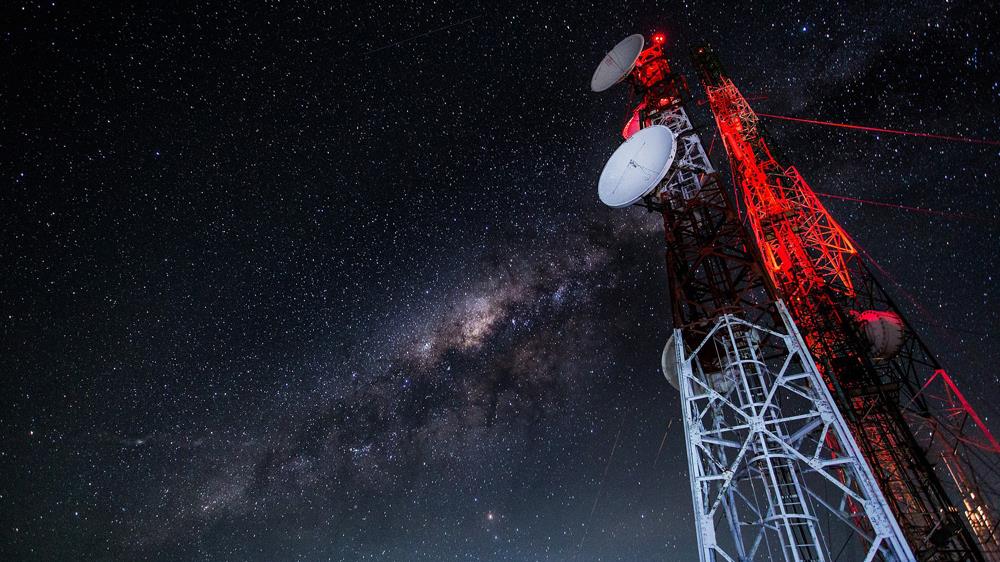

On 3 April 1973, Motorola employee Martin Cooper made the world’s first mobile phone call.
Some 50 years later, more than six billion people are connected to mobile services and connectivity has become a vital part of our lives.
It is not just businesses who seek connectivity to effectively communicate with customers, clients and employees. Consumers also have rising expectations and want to be able to communicate and engage at any time, from anywhere.
As Covid-19 has shown, the number of individuals who are working, learning and socialising online is at an all-time high. Now, more than ever, it is increasingly tangible how critical connectivity and communication are.
Yet, there are several parts of the world that have partial or no connectivity at all. Nicknamed ‘notspots’, these are areas where mobile signals are extremely weak or patchy, or users are unable to connect to a network at all.
One possible solution is the use of satellites, but the available radio spectrum needed to get that signal to users is not much, especially with lower frequencies.
Another solution could be to connect a wi-fi enabled train to a satellite, but for the link to work, the antenna must maintain constant contact with one or more moving satellites from a moving train, which is next to impossible. Being able to increase power levels of the signals from ground to space is equally important, as is the price for commercial use.
To meet this ever-increasing demand for connectivity, future systems must further explore reconfigurable radio techniques.
Heriot-Watt University’s microwave and antenna engineering research group does exactly this, by focusing on core challenges faced by the rapidly expanding space industry. Researchers are working on new technologies which will allow the use of high-speed broadband from space even whilst on the move.
The antennas receiving and sending back signals from the satellite on the move would need to be small and powerful. To compound matters further, such a device currently does not exist.
Our researchers are now developing new radio technologies for broadband millimetre wave satellite communication systems. Called the Infinect antenna, these devices will provide higher data rates and improved services, making them idea for fast-moving locations such as planes and trains that are rife with notspots.
They will be capable of operating at higher frequencies, deliver connectivity from space to the Earth, optimise the data throughput between the Earth and space, and will be so compact that they will not interfere with the aerodynamics of mobile platforms such as trains or airplanes.
Multiple benefits
These antennas will be cheaper than existing systems. Upscaling the service is seamless, inexpensive and hassle-free. They are reliable, unaffected as they are by regional conditions such as an unstable power grid or natural disasters. The devices can transfer large amounts of data quickly.
Passengers will be able to make mobile phone calls whilst onboard flights, with no limitations on the number of people using the communications systems at a time
And for airplanes out of the range of base stations, these devices can deliver Internet on the move, and all of it high-speed broadband.
In the future, applications could potentially include delivering ultra-HD and 3D TV in areas where laying cables is not possible.
UK pavilion brings together mind and machine
This research is part of Heriot-Watt University’s Institute of Sensors, Signals and Systems, which examines how space exploration and resulting research could help with exploiting the vast potential of satellite technology for consumer services, including the development of this antenna. The university's close links with the industry and space agencies ensure that the problems we investigate are the important ones for the sector.
Similarly, in the UAE itself, the nation is actively seeking opportunities to explore celestial bodies, develop satellite communications technology and deploy the latest space technologies in terrestrial applications. The UAE recognises the need for applications of remote sensing through satellites, including natural resource mapping, environmental monitoring, land-use planning and security.
It is often said that space is the next frontier. It is quite possible that one of the most interesting use cases of the space economy is providing internet connectivity. We are already seeing the growth of an ecosystem around space tech.
And as future terrestrial technologies become increasingly unable to meet the needs of growing international markets, there will be an increasing need for ‘Smart Space’ that is connected, capable, adaptable, accessible and affordable. We will enter an era where space is a platform and will provide better insight for solving problems in the world around us.
Expo 2020’s mobility theme has similar goals – to create connections to drive the world forward, breaking down the divide between the physical and digital worlds to build a harmonious, global society where information, ideas and goods are exchanged faster than ever before to unfold thousands of possibilities. Research such as this our contribution to this goal.
You might also like...

Contractors win Oman Etihad Rail packages
23 April 2024

Saudi market returns to growth
23 April 2024

Middle East contract awards: March 2024
23 April 2024

Swiss developer appoints Helvetia residences contractor
23 April 2024
A MEED Subscription...
Subscribe or upgrade your current MEED.com package to support your strategic planning with the MENA region’s best source of business information. Proceed to our online shop below to find out more about the features in each package.







